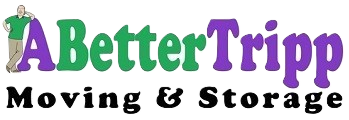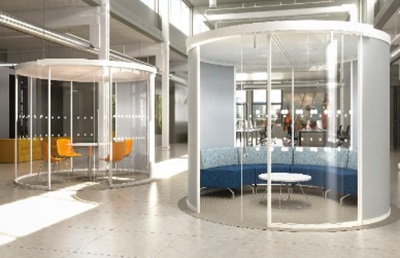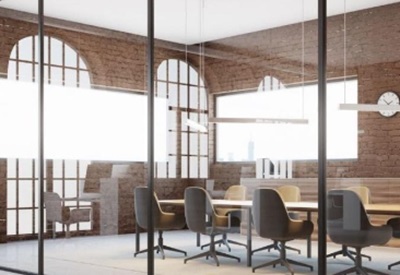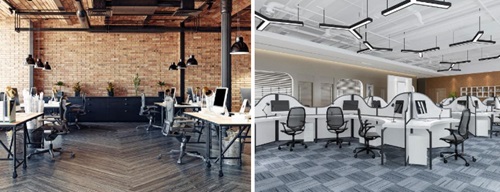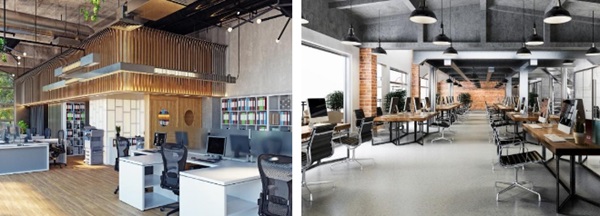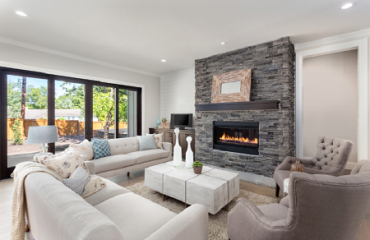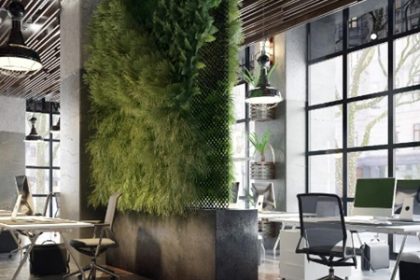
Moving and designing your office space can be an exciting opportunity to create a productive, comfortable, and visually appealing environment for your team. Here are some steps to help you through the process:
Plan the Layout:
Create a floor plan that optimizes space utilization and facilitates communication and collaboration among team members. Consider factors such as workstation placement, meeting areas, break rooms, and storage space. The new trends are the hybrid workspaces office pods, eco friendly offices, glass offices and the cellular office layout.
Set a Budget:
Determine how much you’re willing to spend on the move and office design. This will help you make decisions about furniture, decor, and other elements of the office.
Choose Appropriate Furniture:
Select furniture that fits your aesthetic preferences, functional requirements, and budget. Consider factors such as durability, versatility, and ease of maintenance when choosing desks, chairs, storage units, and other furnishings. Choose adjustable chairs, standing desks, and other ergonomic solutions to promote comfort and productivity. Office furniture should integrate with technology, support collaboration and promote ergonomic and comfort. The Workspaces should be complemented with plush soft seating areas for communicating and relaxation.
Enhance Collaboration:
Create designated spaces for collaboration and teamwork, such as meeting rooms, brainstorming areas, and breakout spaces. Incorporate tools and technologies that support collaboration, such as interactive whiteboards, dual screen monitors, video conferencing equipment, and project management software. A barista-style reception area naturally fosters social interaction among co-workers. A modern trend in office design, the concept of incorporating bars or wine bars within the workspace is gaining popularity. The design of these spaces emphasizes sophistication and relaxation, making them ideal for networking events or as a unique setting for discussions. The integration of private dining areas into office spaces are designed to accommodate a select number of guests, offering a secluded setting for events like lunch meetings and dinners with important clients. Daycare and Exercise rooms help enhance your employee’s lifestyle.
Incorporate Branding:
Infuse your company’s brand identity into the design of your office space through color schemes, signage, artwork, and branded materials. This helps reinforce your brand culture and identity among employees and visitors. Make sure you outfit your meeting rooms with plenty of large screens and a professionally installed audio system. Informal auditoriums with tiered seating are particularly on trend in modern office design, aligning with the evolving needs of contemporary corporate environments.
Add Personal Touches:
Incorporate personal touches and elements of inspiration and creativity into your office design. Consider adding plants, artwork, motivational quotes, and other decor elements that reflect your company’s values and culture. Lighting, office desks, art, bright spaces and large windows all add that extra touch. Adjustable lighting options can transform the space from a bright, energetic spot during the day to a more subdued, intimate setting in the evenings. Outdoor scenery is wonderful with large windows and outdoor patio offices. Color schemes that offer inspiration for the office are different shades of blue help to prioritize calmness, whites and off whites will help with stress, dark black, and gray shows sophistication and prestige and yellow keeps the work space stimulating.
Moving your Office
An office move can be a significant endeavor, but with proper planning and organization, it can go smoothly. Research and hire professional movers who specialize in office relocations. Make sure to get quotes from multiple companies and choose one that fits your budget and requirements. Order packing materials such as boxes, bubble wrap, tape, and labels. You may also need furniture dollies, moving blankets, and other equipment depending on the size of your office. Update your company’s contact information on your website, business cards, letterheads, and other marketing materials to reflect the new address. Arrange for utilities such as electricity, water, internet, and phone services to be transferred to the new office before the move.
Coordinate with your IT department or service provider to ensure that computers, phones, printers, and other equipment are set up and ready to use at the new location. Update your business licenses, insurance policies, and any other legal or financial documents with the new address. Once you’re settled into your new office, consider hosting a grand opening or office-warming party to celebrate the milestone with your employees, clients, and partners.
